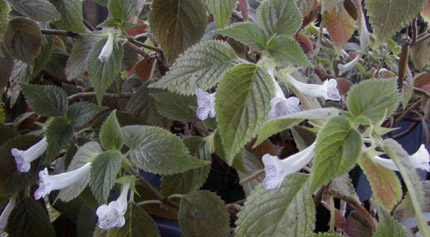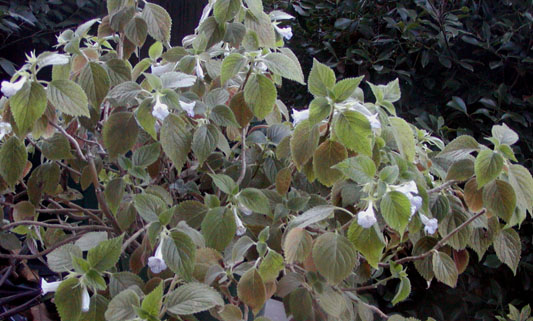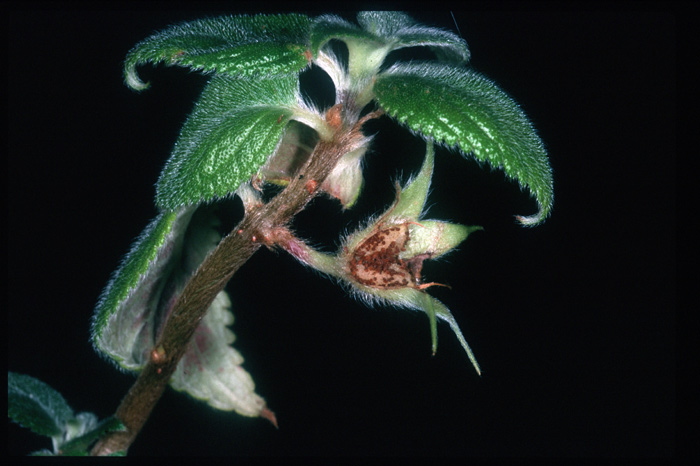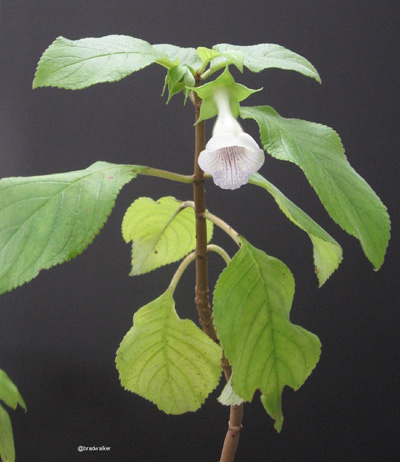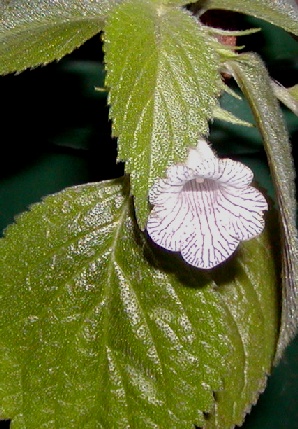
Sinningia gerdtiana
- Pictures of whole plant
- Blooming season
- Fruit
- Comparison to S. schiffneri
- Hybridization
- Feature table
This species is named after Gerdt Hatschbach, who led Alain Chautems back to the original collection site after an absence of 25 years, putting my 25-minute memory to shame. Seed was distributed under inaccurate spellings of the given name.
Mauro Peixoto distributed seeds of this species at the 2002 AGGS convention in New Jersey. Grateful gesneriad growers snapped up the seeds, sowed them, and about a year later started complaining. "When is this thing ever going to bloom???"
